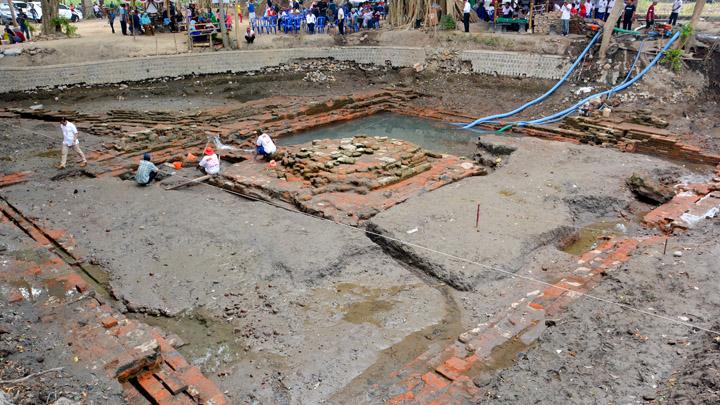
TEMPO.CO, Jakarta - Every day, Rahim goes to work at the two-hectare chili farm near his house in Hiyung village in South Kalimantan. He sees no need to plant other commodities on his land because growing chili is enough to support his family of four.
"It's profitable because the chili is a special commodity in our area," said the 34-year-old farmer. The hiyung chili, named after its hometown, looks similar to the bird's eye chili: small in size but slightly orange in color.
Rahim claims that the variety is spicier compared to other chili varieties in Indonesia. "You don't need much to feel the heat," said Rahim. He has been planting this chili since 2002, when he saw a farmer in a neighboring village harvest his chili crop and realized that it would also grow well in his own village.
Rahim has always been a farmer. He used to cultivate rice but never saw it as a profitable commodity, given that the area is not fit for growing paddy.
Today he makes an average of Rp50 million annually from selling his crop, enabling him to save some money to pay for his children's education. "Every 1,000 chili plants can produce 10 kilograms per harvest season," said Rahim.
Just like Rahim, Radiah, 43, also finds the hiyung chili profitable. Radiah has been planting this variety for 15 years, tending to an almost one-hectare farm that belongs to her family. "Chili is the only thing I plant on our farm, in addition to some vegetables in my backyard. But the vegetables are only for our own consumption," she said.
She reckons the extra spiciness in this particular kind of chili is what makes it special. Additionally, said Radiah, the variety can last longer in room temperature before it begins to rot. "I have a seller at the market who can confirm this. She said she can leave the chili outside for days and it would still be in good condition," she explained.
Radiah is a member of a women farmers' group in the village. Its entire 22 members grow chili. They have recently learned how to add value to their chili, using supplies that cannot be sold at the market, to make other products.
"When we produce a large amount [of chili], we want to make sure the ones that we cannot sell won't go to waste," she said. The women learned how to use the left-over chili to produce sambal (chili paste), conserve it and package it for marketing.
Their biggest challenge so far has been the continuing wet season, which has affected the harvest of chili farming throughout the country, increasing the price. Rahim said many chili farms were flooded, including his own, incurring considerable damage. He predicts this year's production will decline.
"But I remain hopeful. I know we will produce chili again when the rainy season is over. Chili is still this village's most profitable commodity," said Rahim.
The hiyung chili was discovered in 1999 by Barjo, 45, a former rice farmer in the village. Barjo's rice yield had been declining over the years, due to the acid soil prevalent in the locality, which is not suitable for growing rice.
Desperate, he tried to find other crops that might be more suited to the soil's condition in order to make a reliable living from farming. One day, while visiting the neighboring village with friends, he encountered chili pepper plants growing on the mountainside.
"Many of the bushes were laden with the chili, so I tried some. I was surprised at how spicy they were. I decided to bring some back and tried to plant it near my house," said Barjo.
It was challenging at first because Barjo had no experience in growing chili. He had no idea how to seed them, nor manage the chili plants. It took several trials and errors before he managed to successfully grow this variety that has eventually become known as the 'hiyung' chili.
Because the village sometimes gets flooded during the rainy season, he planted seeds on raised seedbeds, or surjan in the local language. Barjo grew around 200 chili plants in his backyard.
A neighbor saw his success and asked Barjo for seeds so he could also plant chili on his land. "My neighbor said his plants grew well and were more resistant to pests and diseases than the more common varieties," said Barjo.
Soon after that, other fellow villagers followed suit. According to Barjo, before they became chili farmers, many of the villagers made a living gathering wood in the nearby forest. "Now 85 percent of the 420 families living in the village are chili farmers," he said. (*)
Read more inspiring Outreach stories in Tempo English Weekly News Magazine























